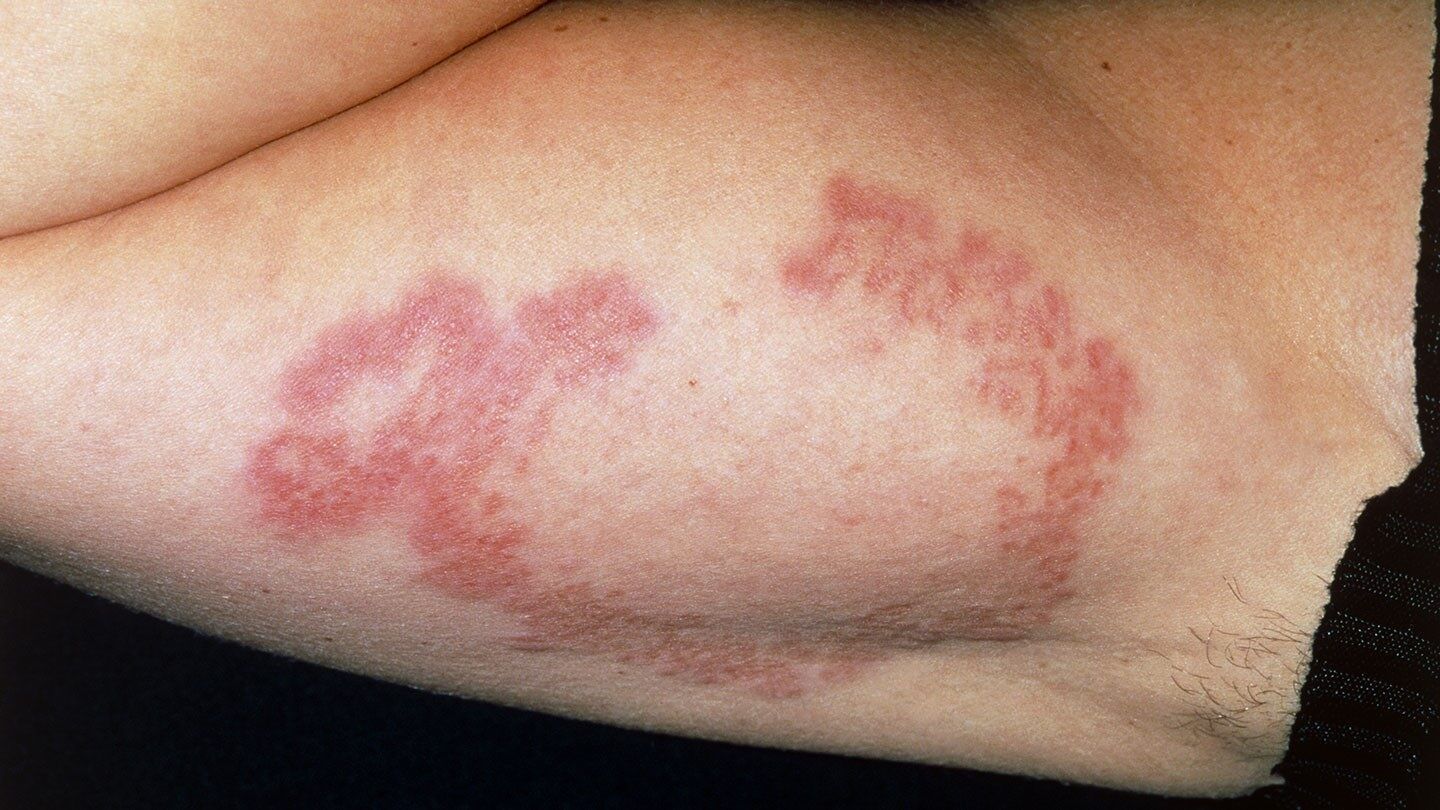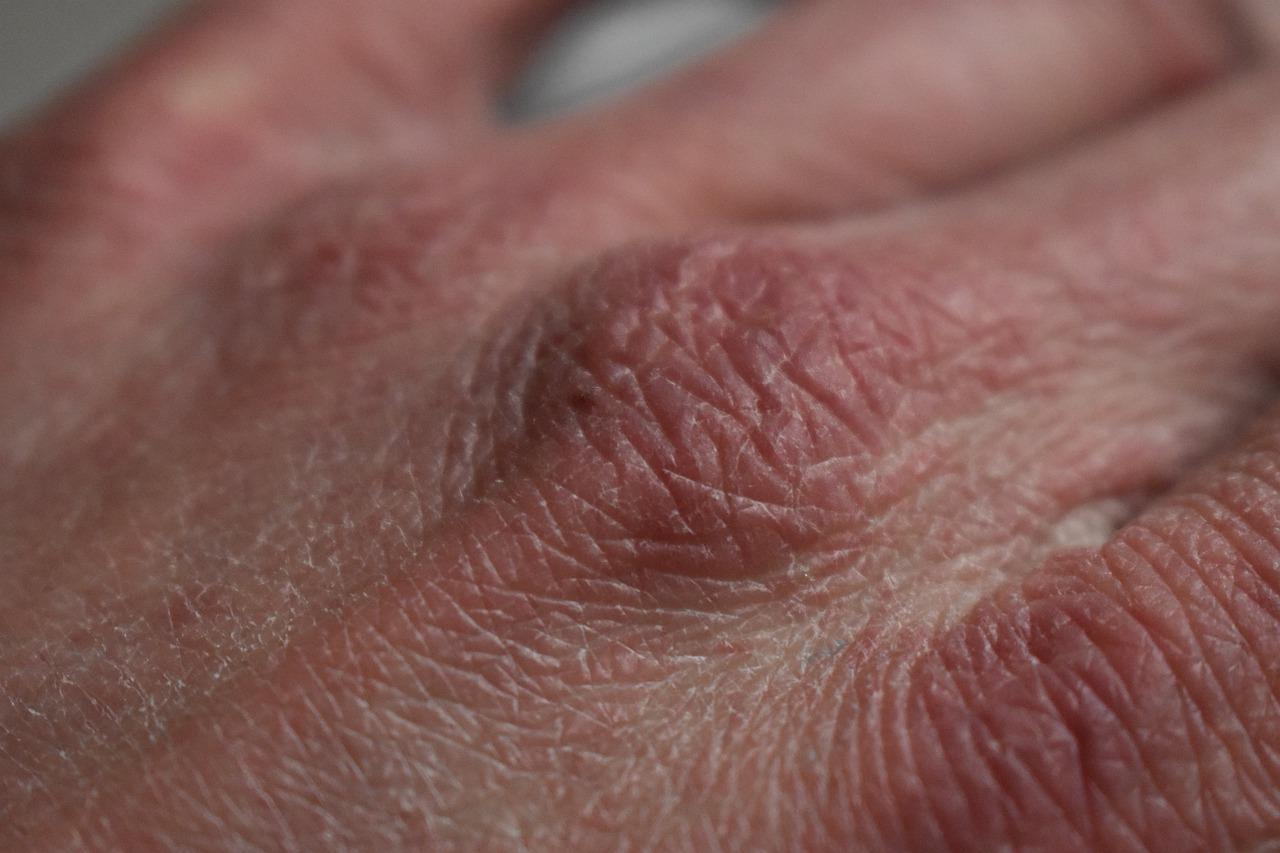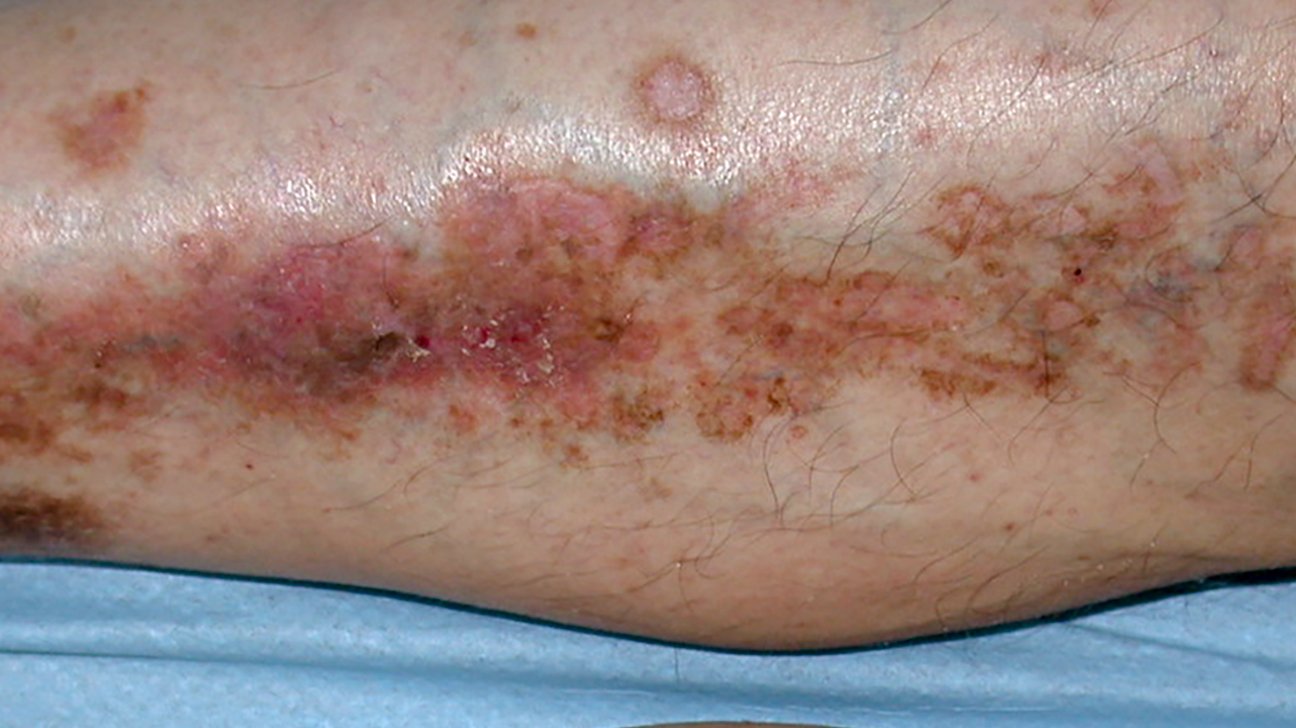Skin Problems With Multiple Causes
- Itching:Itching skin, also called pruritus, can have many causes, such as a yeast infection, dry skin, or poor blood flow. When itching is caused by poor blood flow, the lower legs and feet are most often affected. Using lotion can help to keep your skin soft and moist, and prevent itching due to dry skin.
Tips For Diabetic Skin Care
Skin care for people with diabetes is really no different to that which is required by those who dont have diabetes. However, a few extra skin care tips can help ensure and maintain healthy skin.
- Wash with a mild, neutral soap and make sure that as well as rinsing you also dry yourself. This may include drying between your toes, under your arms, and anywhere else that water can hide.
- Use a moisturising lotion to keep you skin soft and moist. This type of cream is widely available and can make a huge difference.
- Keeping hydrated can help with keeping your skin moist and healthy.
- Wear loose-fitting underwear made from 100% cotton this allows a healthy through flow of air.
- Consider wearing special socks and shoes if you have neuropathy and are worried about skin care of your feet.
- Keep a close eye on any dry or red spots on your skin, and be ready to act by ontacting your healthcare professional sooner rather than later.
- Keep an extra close eye on any areas affected by neuropathy and make sure to seek professional advice at an early stage.
- Seek medical advice if you have persistent dry skin as this can lead to infections, which can quickly develop into serious complications.
If your skin problems worsen over time, see a doctor immediately.
How Can I Prevent Diabetes
The best thing you can do to prevent skin problems is to keep blood sugar levels within the range recommended by your healthcare provider. Proper skin care can lower your chances of getting a skin rash, infection or wound thats difficult to heal.
Take these steps to prevent skin problems:
- Check your skin daily for signs of rashes, redness, infections or sores.
- Use warm water and moisturizing soap in the shower.
- Pat skin dry with a towel , making sure to dry in between fingers, toes and skin folds.
- Apply fragrance-free moisturizers after showering while skin is still damp and soft. Look for creams and ointments with ceramide to help skin retain moisture.
- Apply creams containing 10% to 25% urea to cracked, dry heels at bedtime.
- Prevent dehydration and keep skin hydrated by drinking plenty of fluids.
- Treat cuts and wounds immediately with soap and water. Use antibiotic ointments only if your healthcare provider gives the OK. Bandage the wound daily. Call your provider if you notice signs of redness, pain, drainage or infection.
- Use a humidifier to add moisture to the air in your home.
A note from Cleveland Clinic
Cleveland Clinic is a non-profit academic medical center. Advertising on our site helps support our mission. We do not endorse non-Cleveland Clinic products or services.Policy
Recommended Reading: Medicare Requirements For Diabetic Shoes
Darker Area Of Skin That Feels Like Velvet
A dark patch of velvety skin on the back of your neck, armpit, groin, or elsewhere could mean that you have too much insulin in your blood. This is often a sign of prediabetes.The medical name for this skin condition is acanthosis nigricans.
Acanthosis Nigricans
Often causing darker skin in the creases of the neck, AN may be the first sign that someone has diabetes.
Take action
- Get tested for diabetes
Type 2 Diabetes Can Be A ‘devastating Diagnosis’ Says Expert

We use your sign-up to provide content in ways you’ve consented to and to improve our understanding of you. This may include adverts from us and 3rd parties based on our understanding. You can unsubscribe at any time. More info
Diabetes type 2 can affect every part of the body, including the skin. Some of these problems are skin conditions anyone can have, however, people with diabetes can get them more easily. These include bacterial infections or fungal infections. If you experience either one of these two unusual symptoms found on your hands or feet you should speak to your GP for further tests.
Don’t Miss: What Gauge Are Insulin Needles
Good Blood Sugar Control Treats Digital Sclerosis
About a third of people with type 1 diabetes have digital sclerosis thick, tight, waxy skin that develops on the backs of the hands. The finger joints stiffen and become difficult to move. Sometimes this skin problem occurs on the toes and forehead as well. Rarely, knees, ankles, or elbows may stiffen. Again, good blood glucose control is the only treatment. Moisturizer may help soften the skin.
How Does Diabetes Affect Your Skin
The connection between diabetes and skin conditions exists because diabetes can affect your body in many different ways. Some of the effects of diabetes can affect your skin, increasing the risk of skin conditions such as infections.
One common issue caused by diabetes is poor circulation. When the blood flow to the skin is reduced, it can affect the ability of the skin to heal and regenerate. The skin wont be able to produce as much collagen, which can also affect its texture and appearance.
The reduced blood flow and high blood sugar associated with diabetes can also affect the immune system. This can increase the risk of infections in the skin as well as in other parts of the body because your defences are lowered.
When the skin becomes damaged due to the reduced blood supply, it can affect sweating and make your skin more sensitive to pressure or to temperature. Your skin can also be more vulnerable if you have any nerve damage as a result of your diabetes. You might not notice small cuts or grazes right away if you cant feel them as much, which means that they wont be disinfected promptly to prevent infections. Cuts can also take longer to heal when you have diabetes, which can allow more time for germs to enter your body.
Also Check: Can Type 2 Diabetes Make You Tired
Fungal Infections Are Common With Diabetes
People with diabetes are susceptible to fungal infections, especially one called Candida albicans. This yeast-like fungus creates a red, itchy rash, frequently surrounded by small blisters and scales, that is usually found in warm, moist areas like armpits or between the toes. Other fungal infections common to diabetics include ringworm, jock itch, athletes foot, and vaginal yeast infections. Talk to your doctor about the best medication to kill fungal skin problems.
The Peculiar Relation Between Diabetes And Skin Problems
As per the facts, around one-third of diabetic cases see skin related problems later in their life. That speaks of how these two are interrelated to some extent. In fact, many skin problems serve as an initial reminder or warning signs for diabetes.
A timely diagnosis and cure for the diabetes case will help curb the skin problems once and for all. Controlling diabetes is what one can do to control the skin problems in the body.
Recommended Reading: What Is The Best Meal Replacement For Diabetics
What Does A Diabetes Rash Look Like
Diabetes rashes look different depending on the type and cause.
Some diabetes rashes only affect people with diabetes. They usually go away when blood sugar is under control. These rashes include:
- Blisters : Painless blisters may form on the backs of hands and feet and on the legs and forearms. This rare condition most often affects people who have diabetic neuropathy.
- Diabetes dermopathy: Light-brown, round-shaped scaly patches, like age spots, appear on the shins. These harmless spots dont need treatment.
- Digital sclerosis: Some people with Type 1 diabetes develop hardened, thick, waxy skin on the backs of their hands. The finger joints stiffen, making movement difficult. A related rash is scleredema adultorum of Bushke which is tightness, thickening, and hardening of the back, neck, shoulders and face. There are various treatments that dermatologists can provide for this.
- Necrobiosis lipoidica diabeticorum : This lower leg rash is more common in women. NLD causes raised, red, shiny patches with a yellow center. Blood vessels may be more noticeable. The rash may be itchy and painful. You should see a dermatologist for treatment options.
- Diabetes Foot Syndrome: These are ulcers that develop from trauma to the skin. The ulcers can take a long time to heal and there is an increased risk for infection.
Other conditions can affect anyone, but are particularly common among people with diabetes. These rash-causing conditions can also be a warning sign of pre-diabetes:
How Can People With Diabetes Take Better Care Of Their Skin
- Follow the diet, exercise regime and medications as per the advice of the healthcare provider.
- Drink plenty of water as it would help in keeping the skin moist and hydrated.
- Use a mild, moisture-containing soap for bathing and pat dry the body properly as wet skin can act as a site of infection. Do not use products that contain fragrance or dye.
- Thoroughly clean places like underarms, under the breasts, between the legs and between the toes as water can get collected easily in these areas.
- Avoid bubble baths and extremely hot water as it can dry out the skin.
- Apply moisturizer on the entire body after bathing to lock the moisture in. Avoid chapped lips by moisturizing with a lip balm.
- Use a humidifier to add moisture to the room, thus preventing drying of the skin.
- Use a sunscreen with an SPF of or higher than 30 to protect the skin from harmful UV rays.
- Try wearing cotton undergarments as they allow the skin to breathe through it.
- Treat all the wounds and cuts right away using antibacterial ointments, gauze pads, hypoallergenic tape and cleansing wipes. Avoid using iodine and alcohol to clean the cuts as they can be too harsh.
Read Also: Where Is The Best Place To Inject Insulin
Poor Blood Flow Results In Itchy Skin
Itchy skin can have many causes. In people with diabetes, a yeast infection, dry skin, or poor circulation can be the root cause. When poor blood flow is the culprit, the lower legs may be the itchiest part of the body. What can you do to stop your skin from crawling? Consider bathing less often, and use mild soap when you do. Slather on some lotion to moisturize dry skin, but avoid applying it between your toes.
Is There A Connection Between Diabetes And Skin Conditions

Skin problems are often one of the first signs of type 2 diabetes that people notice, because they can be easier to spot than the other symptoms. If you have type 2 diabetes then you might be affected by certain kinds of skin conditions too. More than half of all people who have diabetes will have a skin condition that is linked to their diabetes at some point. Although these kinds of skin conditions can affect other people too, they are more likely to happen when you have diabetes.
You May Like: The Effects Of Diabetes On Your Body
What Skin Problems Can Be Experienced By People With Diabetes
Ketosis Vs Ketoacidosis: The Differences Explained
As if you didnt have enough on your diabetes to-do list, add healthy skin care products to the list to avoid the most common diabetes skin problems.
Just as high blood sugar levels can damage the blood vessels in your fingers, toes, eyes, and organs, they can also cause mild to severe problems in your skin.
In this article, you will learn about the most common diabetes skin problems, how they are treated, and what steps you can take to keep your skin healthy as a person with diabetes.
You May Like: Where Can I Put My Insulin Shot
What Causes A Diabetes Rash
For people who dont have diabetes, a skin rash may be the first sign of high blood sugar or prediabetes. Your healthcare provider can help you take steps to prevent diabetes.
If you take medications for diabetes, a skin rash may indicate that you need to adjust treatments to lower your blood sugar levels. Some other rashes result from reduced blood flow to your extremities .
Major Pathways On Skin Disorders In Dm
Skin disorders in DM patients are highly correlated with glycemic control. As an example, Foos et al. conducted a study with 403 DM patients in Brazil and evaluated their skin disorders and glycaemia control. Thus, the study demonstrated that 94 % of patients with inadequate glycaemia control had some skin disorder on the other hand, only 60 % of DM patients with adequate glycaemia control had some skin disorder .
DM affects the skin through several mechanisms, being hyperglycemia per se and AGEs the most well-described. Reaching pathological high levels of glycaemia strongly affects skin homeostasis by inhibiting keratinocyte proliferation and migration, protein biosynthesis, inducing endothelial cell apoptosis, decreasing nitric oxide synthesis and impairing phagocytosis and chemotaxis from several cells . Besides hyperglycemia induce direct damage, high glucose levels also induce AGE formation. AGEs are formed from glycation of proteins, lipids and nucleic acids that act in several pathways, inducing reactive oxygen species formation, impairing ROS clearance, as well as intra and extracellular proteins function, and inducing pro inflammatory cytokine through nuclear factor pathway .
Table summary of studies reporting skin disorders prevalence in DM 1 and DM 2 patients, with a subjects description , prevalence of skin condition and the most common skin condition in each study.
Read Also: How Long Does Thc Stay In A Diabetics System
What Are The Signs And Symptoms
Diabetic dermopathy lesions appear most frequently on the shins. Less commonly lesions can be found on the front of the thighs, forearm, side of the foot, scalp and trunk. Features of lesions are:
- Round or oval-shaped
- Initially scaly but then flattens out and becomes indented
- Commonly occur on both shins.
The presence of four or more lesions is almost always limited to patients with diabetes. People presenting with shin spots not already diagnosed with diabetes should undergo a further investigation to rule out the possibility of early diabetes.
Diabetes: 12 Warning Signs That Appear On Your Skin
Diabetes can affect many parts of your body, including your skin. When diabetes affects the skin, its often a sign that your blood sugar levels are too high. This could mean that:
-
You have undiagnosed diabetes, or pre-diabetes
-
Your treatment for diabetes needs to be adjusted
If you notice any of the following warning signs on your skin, its time to talk with your doctor.
Read Also: Diabetic Strips 4 Cash Phone Number
How Diabetes Affects Skin Health
Diabetes skin problems are a common complication of both type 1 diabetes and type 2 diabetes approximately a third of patients with diabetes will develop a skin disorder related to the disease at some point during their lifetime. Many skin complications, such as certain types of rashes and blisters, can directly manifest from diabetes or allergic reactions to insulin or diabetes medications. Other types of skin problems, such as fungal infections, skin irritation, and dry skin, can occur in otherwise healthy patients but tend to affect those with diabetes more frequently.
Hyperglycemia is behind most skin problems caused by diabetes. An excessive amount of sugar in the blood prompts the body to pull fluid from other cells to produce an adequate amount of urine to remove the sugar, resulting in xerosis . Skin that is dry, inflamed, and irritated can likewise result from diabetic neuropathy a result of nerve damage, particularly in the feet and legs. Early diagnosis and treatment from an experienced skin specialist are key to dealing with diabetes-related skin conditions, managing resulting symptoms, and preventing other health complications.
Vitiligo Causes Skin To Lose Color

Vitiligo is a skin problem in which the skin cells that make melanin are destroyed, leading to irregular, blotchy patches that often occur on the hands, face, or chest. Although the cause of vitiligo is unknown, experts believe it is an autoimmune condition like type 1 diabetes, and research published in July 2016 in BioMed Research International described the link between the two conditions. There’s no cure, but light therapy and steroids are used to manage vitiligo. If you have the condition, it’s important to wear a sunscreen of at least 30 SPF, since depigmented skin has no natural sun protection.
You May Like: Blood Sugar Readings For Diabetics